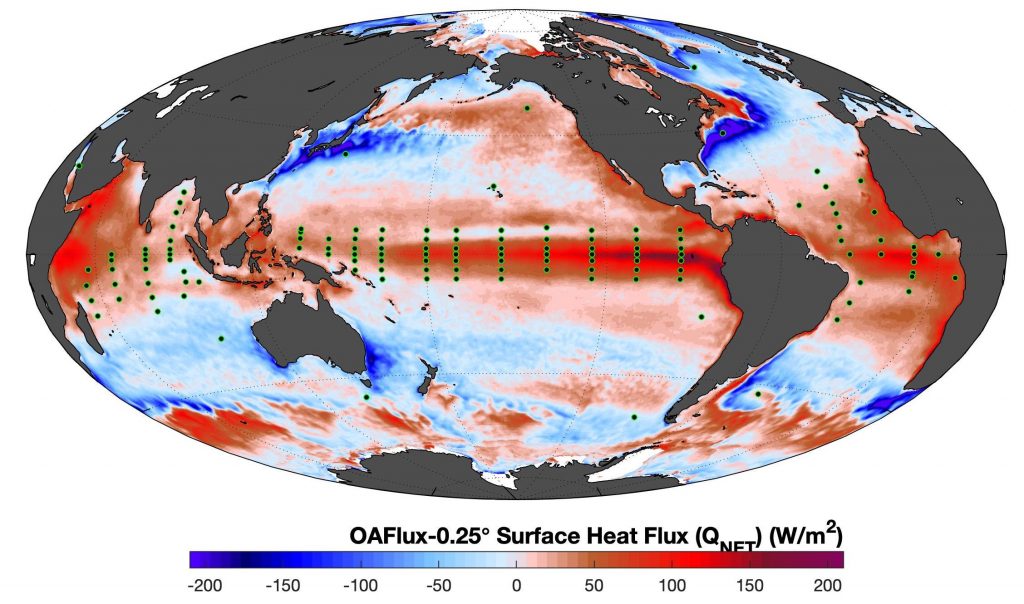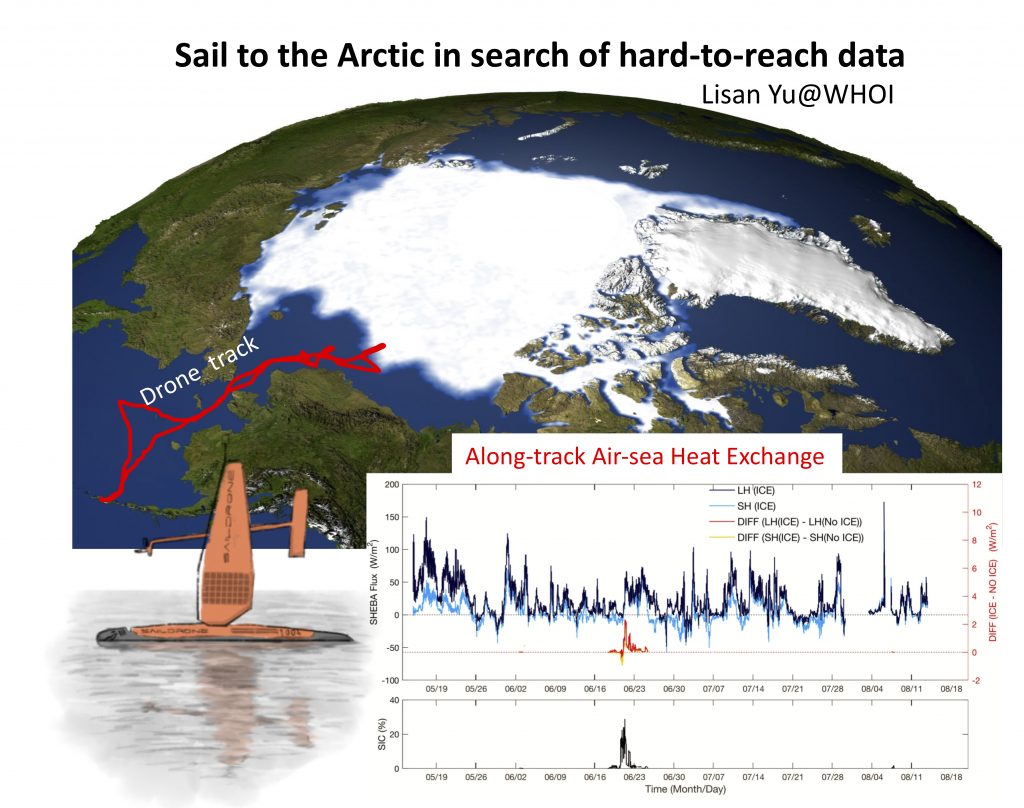surface fluxes
Two versions (1° & 0.25°) of OAFlux products: What are the differences?
Surface turbulent momentum fluxes, latent and sensible heat fluxes, and moisture flux (or ocean evaporation) over the global ocean cannot be directly observed from either satellite or in situ sensors. These fluxes are estimated using the following bulk flux parameterizations: τx = ρ Cd |W – Ws| (u – us) …
Read MoreCool things we do: Machine Learning on Air-sea Fluxes
The air–sea turbulent heat fluxes are fundamental processes for keeping the global climate system in balance with the incoming insolation at Earth’s surface, and they are also a primary conduit for coupling and feedback between the ocean and atmosphere on a broad range of scales, from synoptic weather events to regional and global circulation systems.…
Read MoreCurrently ongoing: New initiative on Arctic Fluxes
October 6, 2020 WHOI-NOAA partnership tackles critical gap in climate knowledge TOPICS: CLIMATE & OCEAN / CLIMATE CHANGE The OOI surface buoy (shown here in 2018 being serviced by the WHOI-operated research vessel Neil Armstrong) will help provide crucial verification of USV and satellite-based models of air-sea interaction in difficult-to-reach high-latitude waters of the North…
Read MoreOcean is warming up. But why is it so difficult to quantify the amount of heat gained at the ocean surface?
The ocean interacts with the atmosphere via interfacial exchanges of momentum, heat (via radiation and convection), and fresh water (via evaporation and precipitation). These fluxes, or exchanges, constitute the ocean-surface energy and water budgets and define the ocean’s role in Earth’s climate and its variability on both short and long timescales. However, direct flux measurements…
Read More


